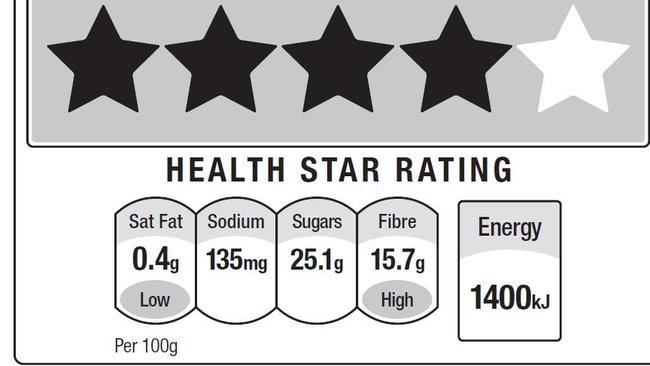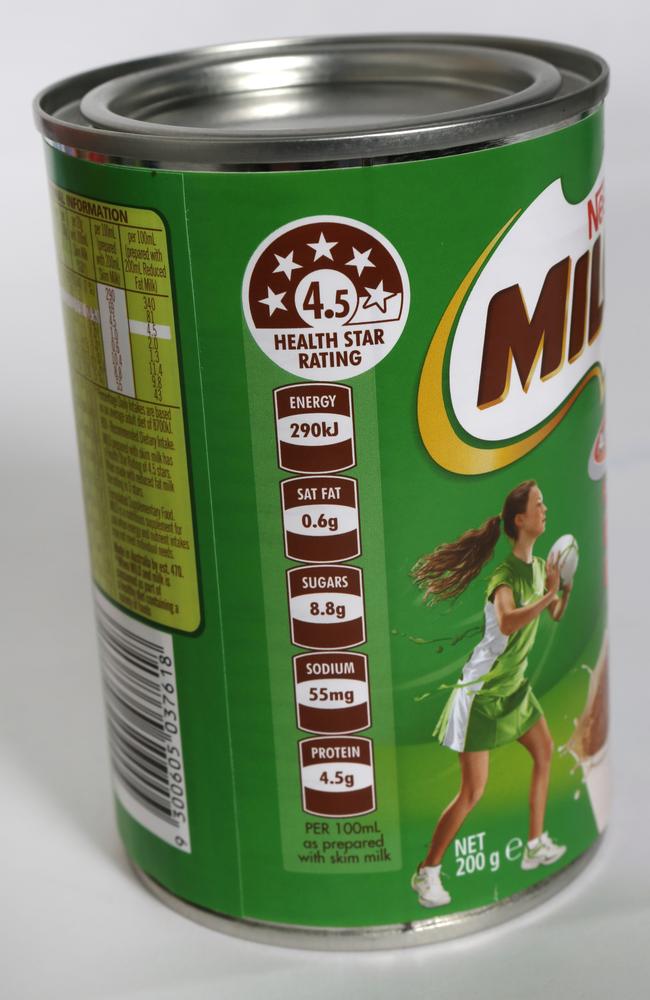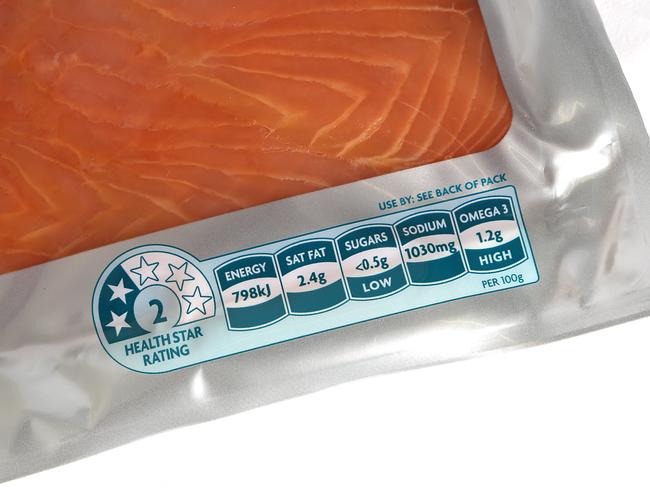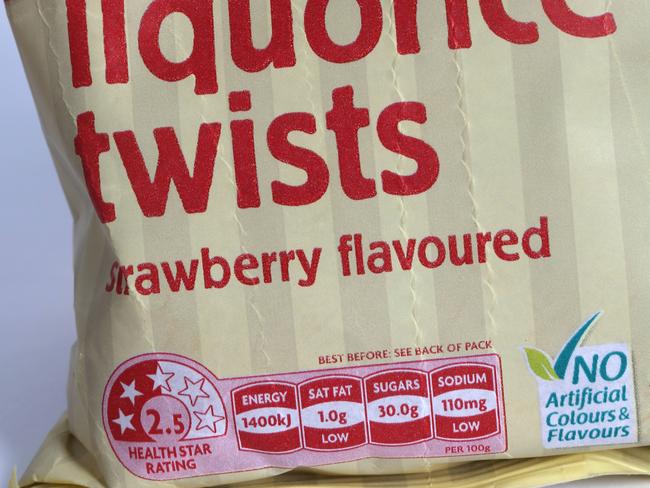Why the health star rating system is flawed
THE Health Star Rating system gives foods a score out of five, but its flawed algorithm means a packet of lollies has a better rating than Greek yoghurt.

WE KNOW that when it comes to buying groceries, we should stock up on vegetables and steer clear of the $1.99 Tim Tams tempting us right in front of the aisle.
But when it comes to identifying which packaged foods are good choices, choosing the healthier option isn’t always clear.
Three years ago, the federal government launched the Health Star Rating System, which resulted in some supermarket products being rated a certain number of stars based on particular nutritional criteria.
Despite some superficial success, there is plenty more criticism to suggest that the system is fundamentally flawed and in urgent need of major review.
So what is actually wrong with the Health Star Rating System?

IT’S NOT MANDATORY
This basically means that some foods are rated, but many are not, especially foods that are generally less healthy and as such would score very few, if any stars.
It is hardly surprising that you can find frozen vegetables, healthy snack foods and bottled water with five stars, but many packets of lollies, biscuits and chips have no Health Star Rating at all. For any public health nutritional guidance system that has the goal of directing consumers towards healthy food choices to work, all foods need to be labelled so consumers can easily compared across products and brands.
IT’S BASED ON NUTRIENTS, NOT WHOLE FOODS
Professor Mark Lawrence FROM Deakin University has worked in the area of health and nutrition for more than 30 years. He recently conducted an informal supermarket review of supermarket products that had a Health Star Rating featured on packaging.
From this, Professor Lawrence summarises that one of the primary issues with the Health Star Rating system is the way it has been calculated.
“The best evidence available for food, diets and health has been synthesised into the Australian Dietary Guidelines,” he wrote.
“These Guidelines make recommendations based only on whole foods (like eating more whole fruits, vegetables, cereals, meat and dairy foods and less highly processed junk foods) rather than recommendations based on individual nutrients.”
This is because people eat foods, not nutrients, and a food’s healthiness is determined by much more than just the sum of its nutrients.
Yet the Health Star Rating system simplistically determines the number of stars it awards by assessing nutrients in food.
This flawed approach to nutrition science means that too often the system results in many junk foods being marketed with a relatively high number of stars.

HEALTHY FOODS CAN HAVE FEWER STARS THAN JUNK FOOD
A complex nutritional algorithm has been formulated in an attempt to weigh up the good and not so good nutrients a particular food offers. But its failure to isolate specific ingredients such as sugar within this calculation, has resulted in some foods which are naturally higher in saturated fat (like full cream dairy) having a lower rating than lower fat, yet heavily processed foods including snack food and confectionery.
The classic example of this can be seen in the case of Greek yoghurt — a natural whole food -which scores just one star using the rating system, compared to a bag of lollies which scores two stars.

THE EQUATION DOES NOT CONSIDER THE LEVEL OF PROCESSING OR RAW INGREDIENTS
As the algorithm used to calculate the number of stars primarily considers nutrients, such as the fat content, there is no consideration given for the ‘cleanness’ of the food, or how natural it is, nor the quality of the ingredients used to achieve certain nutrient levels.
This means we have more foods that become more processed with more ingredients added to help them achieve certain nutrient targets to help them achieve more stars.
THE FOOD INDUSTRY SITS ON THE ADVISORY PANEL
There is a notable absence of nutrition experts on the advisory board that has developed and now governs the Star Rating System.
In fact, while there are medical representatives on the advisory board, there is only one public health nutritionist and one dietitian — who acts on behalf of a major supermarket chain.
The food industry occupies a number of key positions on this panel. There is a clear conflict of interest here. The industry should simply facilitate the implementation of public health initiatives, not be the directors of them.




